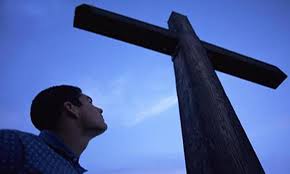The post The light shineth in the darkness appeared first on Anglican Mainstream. by Julian Mann, TCW: THE set Gospel reading for Christmas Day in the Book of Common Prayer makes clear that the conflict between good and evil...
The post The light shineth in the darkness appeared first on Anglican Mainstream.

by Julian Mann, TCW:
THE set Gospel reading for Christmas Day in the Book of Common Prayer makes clear that the conflict between good and evil is intrinsic to the Christmas message.
Today’s reading from the first chapter of John’s Gospel, verses 1 to 14, does not name Jesus Christ, God’s anointed King or Messiah as promised in the Old Testament Scriptures. It describes the eternal Son of God the Father as ‘the Word’:
‘In the beginning was the Word, and the Word was with God, and the Word was God. The same was in the beginning with God. All things were made by him; and without him was not any thing made that was made. In him was life, and the life was the light of men. And the light shineth in the darkness, and the darkness comprehended it not’ (John 1v1-5 – King James Version).
In verse 14, the Apostle John, a witness of Jesus’s life, death and resurrection, affirmed: ‘And the Word was made flesh, and dwelt among us (and we [John and his fellow apostolic witnesses] beheld his glory, the glory as of the only-begotten of the Father) full of grace and truth.’
It is in verse 17, after our set reading, that the name of Jesus Christ first appears in John’s Gospel: ‘For the law was given by Moses, but grace and truth came by Jesus Christ.’
John described God the Son as ‘the Word’ because he believed that the divine Being, whom the authors of the Catholic Creeds identified as the Second Person of the Trinity, was the full and final revelation of the one true God in human form.
John described the Word of God, who became incarnate in Jesus Christ, as the light shining in the darkness. The darkness ‘comprehended it not’ (v5). Despite its best effort, the darkness has not been able to apprehend or grasp the light. The 20th century Revised Standard Version translates the original Greek verb as ‘overcome’. In John’s mind, the light and the darkness are in conflict.
What did John mean by the darkness? His eye-witness account of Jesus Christ in his Gospel makes clear that he meant the darkness of evil. John, steeped as he was in the Jewish Old Testament, believed that evil was rampant in the world because mankind had chosen to rebel against the good and loving God who made them, male and female, in his image.
The post The light shineth in the darkness appeared first on Anglican Mainstream.















